** Update: I have since found and tweaked a much better recipe that I prefer. I will eventually figure out how to post that for you and give proper credit.
After I watched the Cooked documentary on Netflix, I was immediately on the homemade sourdough bread train. The particular episode of Cooked, “Air” caught my attention because fermented sourdough, as bread was intended to be made, is easier for us to digest than regular bread. Who doesn’t wish bread was better for us? Modern bread is filled with preservatives and quickly risen, making it difficult for our bodies to use nutrients and digest. I make this homemade sourdough bread about once per month and freeze one loaf for later use. One slice is great with butter and breakfast!
I had this recipe written down for quite some time and I have no idea where it came from. If it sounds familiar, let me know!
*Mindyfresh is a participant in the Amazon Services LLC Associates Program, an affiliate advertising program designed to provide a means for sites to earn advertising fees by advertising and linking to amazon.com.
Homemade Whole Wheat Sourdough Bread
Why is sourdough better for us?
Sourdough bread is easier for us to digest and it neutralizes phytic acid. Phytic acid is known as an anti-nutrient because it binds important nutrients that we need. Fermentation can have the yeast bacteria break down this phytic acid and make nutrients more available for us to absorb. The sourdough is “fermenting” almost like a pre-digestion to help us break it down when we eat it.
This process is easy for homemade sourdough bread and well worth the wait (Yes, really only waiting is involved). You need white flour, whole grain wheat flour, rye flour, water, sea salt, a scale, ceramic/cast iron casserole dish OR two bread loaf pans with a covering like foil. I find my Kitchen Aid very useful with the dough hook for doing the initial mixings rather than using my hands. It makes 2 loaves and takes approximately 9 hours for the fermentation process and 45 minutes for baking.
Sourdough Starter
*Best option: Buy a sourdough bread starter. Especially if you live in a colder climate like I do, more unlikely to catch “wild yeasts”. It will come with instructions. Follow along below starting with “each day, feed starter”. It is worth the small expense as it will last for years if you take care of it.
Other option: Mix equal parts water and flour in a glass or wood bowl. I like to do 1/2 cup flour and 1/2 cup water. Cover with a towel and wait. Use unbleached flour and non-chlorinated water. You can let tap water sit out for a few hours and chlorine evaporates off. Use a glass bowl. Set it in a warmer area and cover with a towel or cheesecloth, so air can still get in. You could add some yeast. When it’s “ready,” you should see bubbles and smell sour.
Each day, feed starter → discard half the starter and add equal parts flour and water. Continue this for at least 5 days before you begin making bread. I tend to not discard it because it is useful in recipes such as sourdough pancakes.
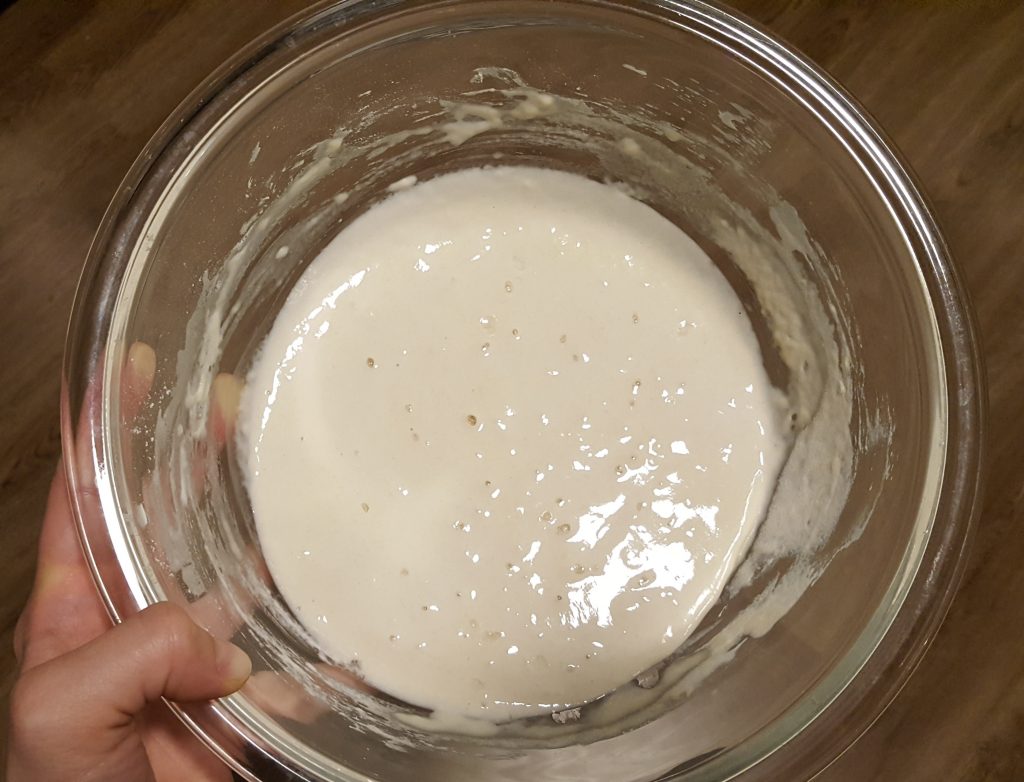
Sourdough Bread Making
After the starter is bubbling well, you can start to make bread. The steps are as follows: Mixing flour and water the night before, mixing leaven in the flour mixture the day of, fermenting, shaping and rising, and baking. The first step happens overnight.
The Night Before Baking Bread
First bowl: Leaven
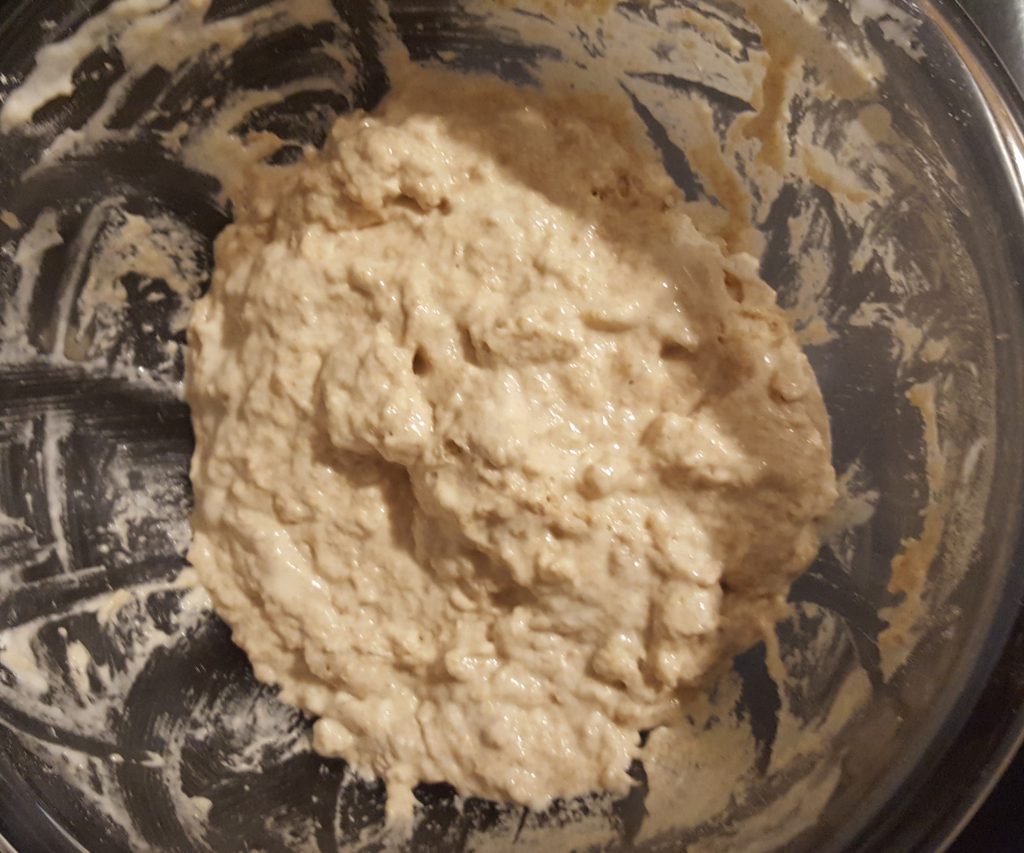
- 100 g whole grain flour
- 100 g white unbleached flour
- 200 g warm water
- 35 g starter
Second bowl: Bread
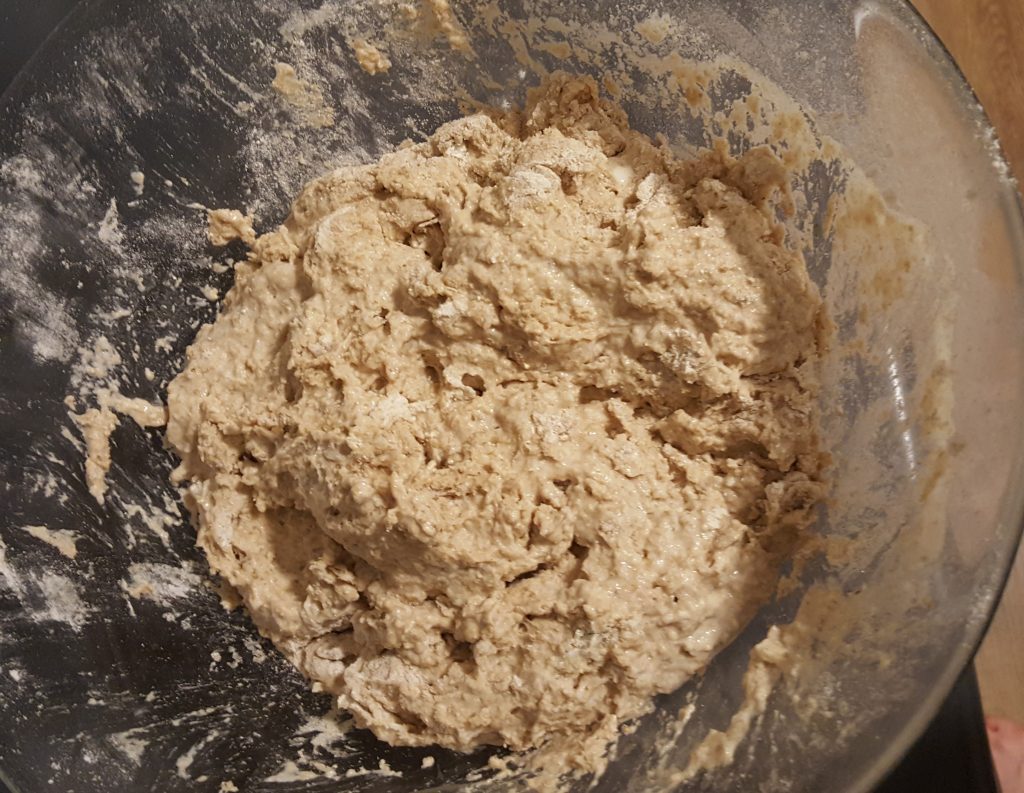
- 600 g whole wheat
- 250 g white flour
- 150 g rye flour
- 900 g warm water
Mix. Cover bowls and let them sit overnight in a relatively warmer area (just not by a window in winter)
Bread Making Day
Mix Leaven In Flour Mixture
- Add 1/2 the leaven to the bread mixture and let rest 20 minutes
- The other 1/2 of the leaven is your new starter (or just discard and use what you had before)
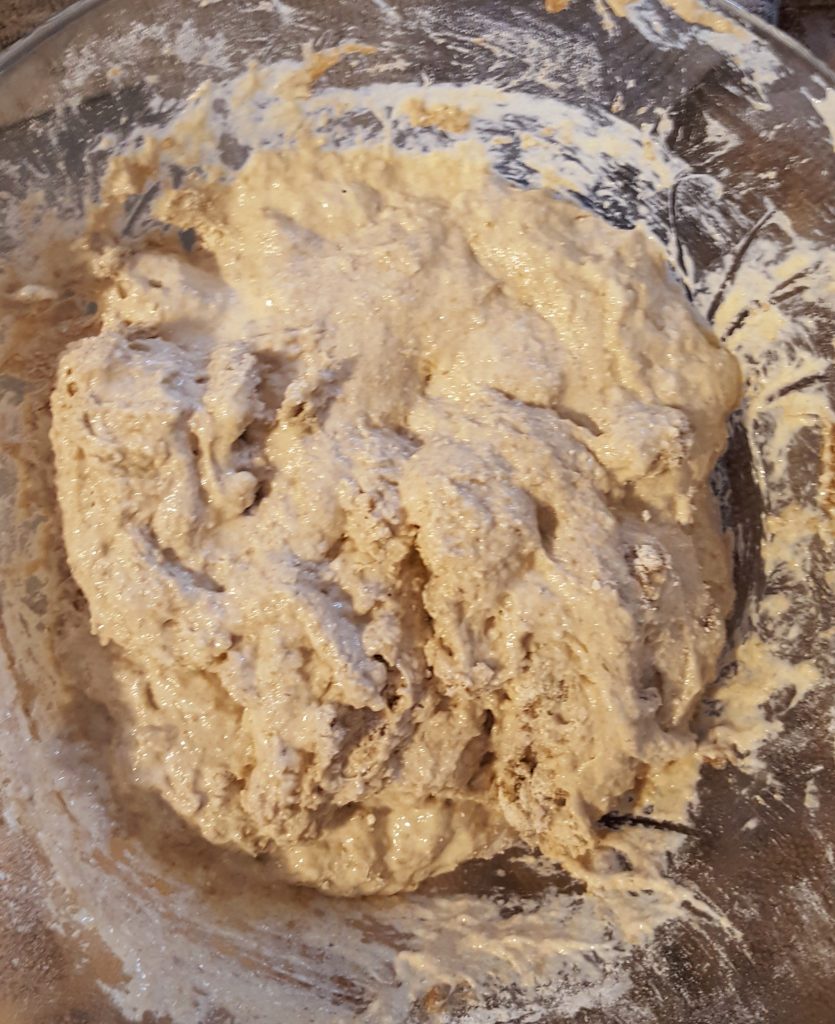
Start Fermenting the Bread
- Add 25 g sea salt to leaven/bread mixture you already let sit for 20 minutes, use hands or stand mixer to mix
- Ferment 4-5 hours.. this means put a towel over it and let it sit
- Every 45-60 minutes, turn dough→ stretch and fold the dough about 3 times.
- The dough is going to be frustrating because it seems wet. Use water to wet hands.
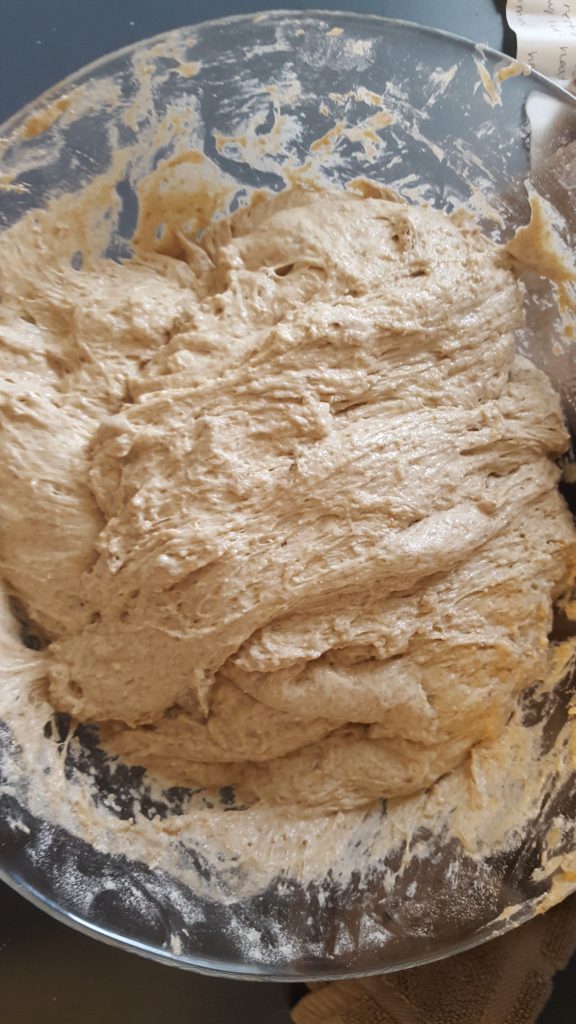
- The dough is ready to make sourdough bread when “billowy and cohesive.” If it smells sour→ ready to shape.
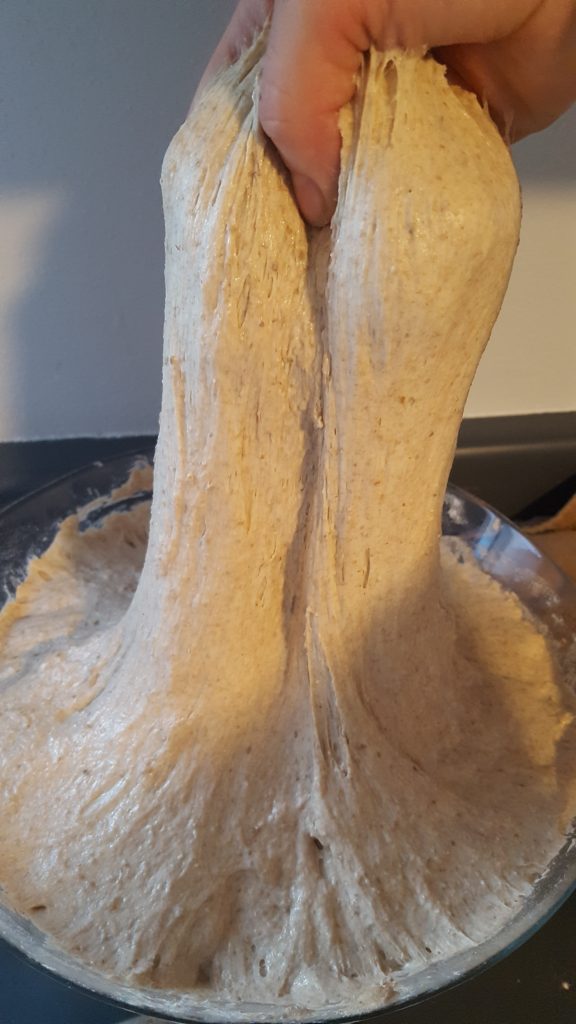
Shaping and Rising Bread
- Shape 2 globes or whatever shape and use additional flour if wet and unable to work with, cover, and rest 20 minutes (sometimes it’s not perfect but that’s okay). It’s more like a flat oval but again, it’s fine.
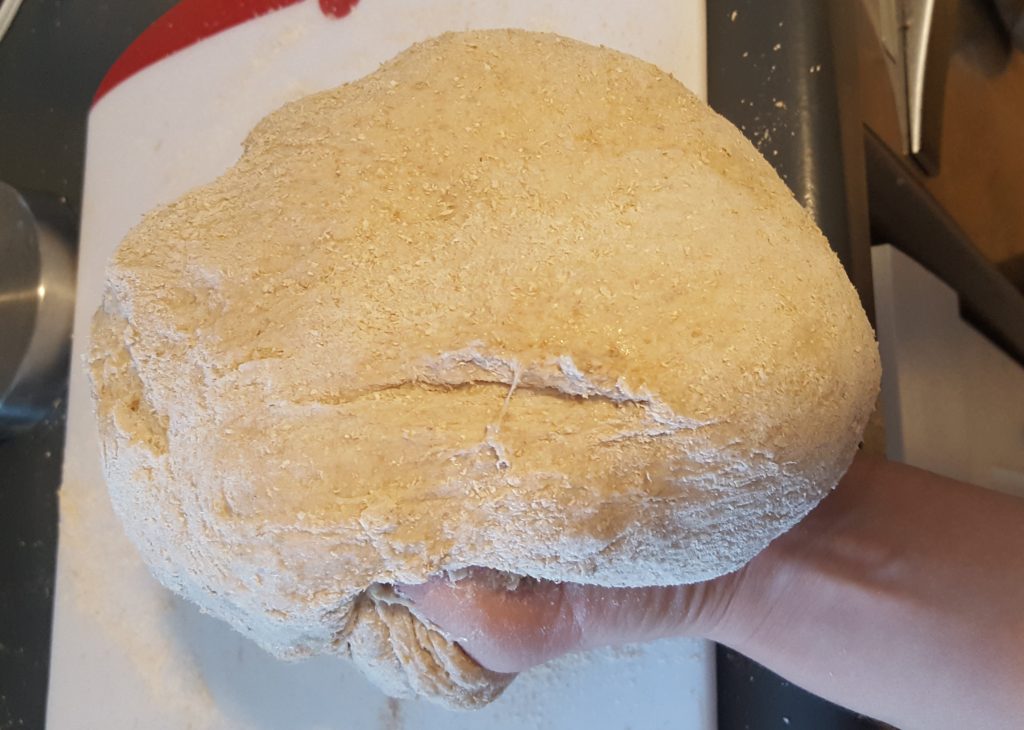
- Last Step:
- Shape and put in the buttered or greased pan that you will use to bake it in. You don’t want to mess around with it after it’s been rising for that period.
- Loaf pan – Use 2 loaf pans well buttered and drop equal parts in each. Cover with a towel.
- Ceramic Dutch oven – Place in the pan and cover with towel.
- You can place in fridge overnight if you ran out of time to bake→ just leave out for 1 hour before baking to get to temperature
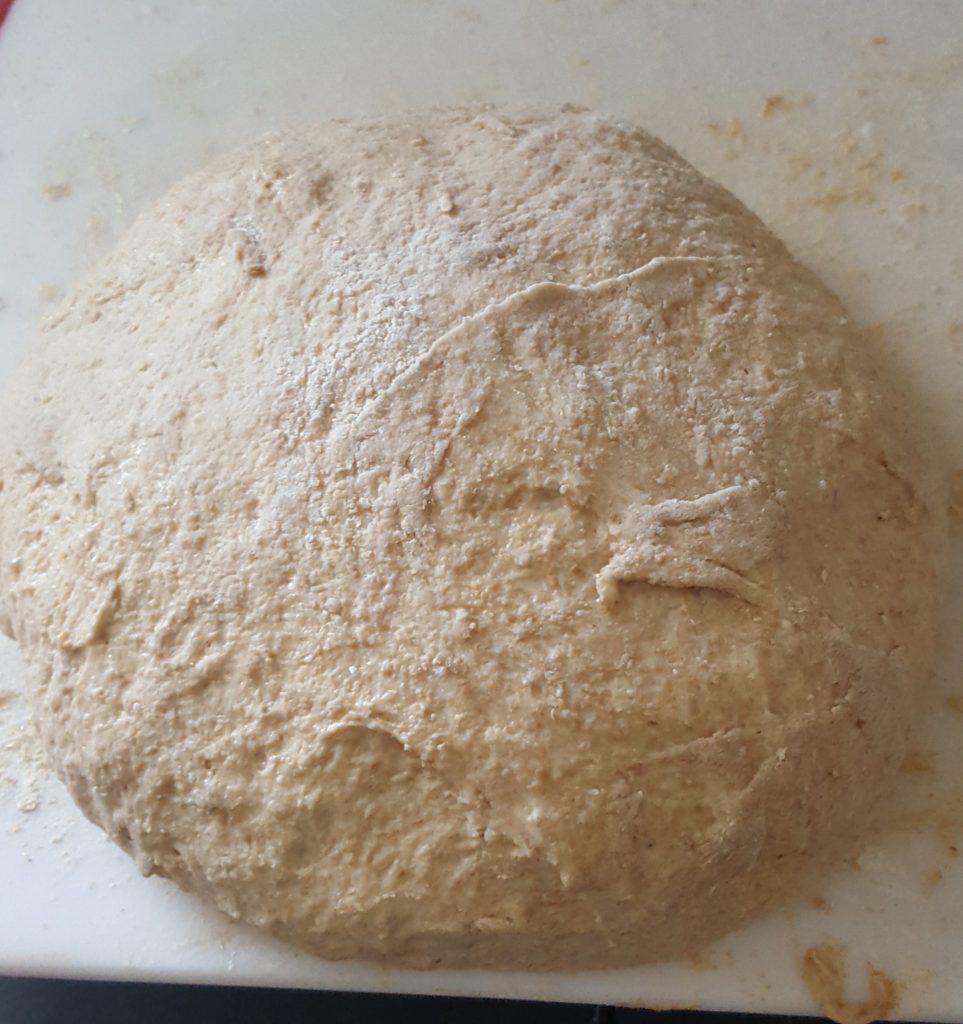
Baking In Ceramic Cast Iron Dutch Oven (see below for loaf pan)
- Use ceramic casserole dish with lid for best results, with chewy center and crusty, crunchy crust.
- Preheat oven to 450°
- Score bread if desired
- Bake 20 minutes with lid on
- Remove lid and bake an additional 23-25 minutes.
- Let cool and enjoy.
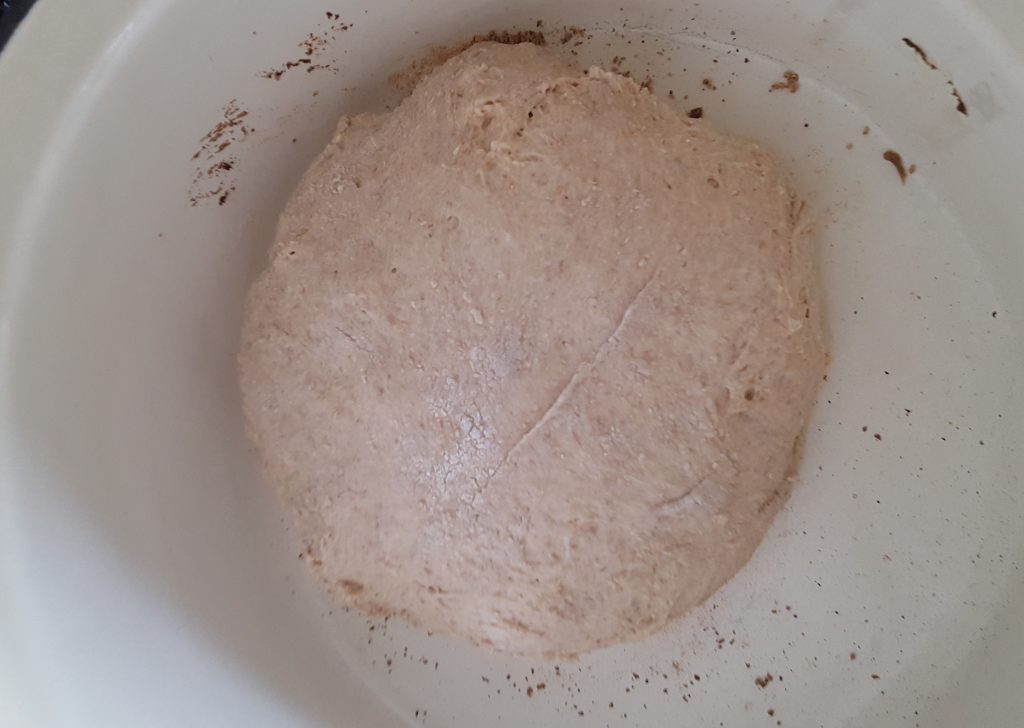
Baking in Loaf Pan
- You’ll need two loaf pans, tin foil, butter
- Butter two loaf pans or use parchment (if it withstands 450)
- When the instructions say to shape dough and rise for 2-3 hours, do this in the loaf pan instead (don’t forgot to grease the pan!)
- Cover
- When 2-3 hours is up, cover with foil and put in oven at 450 for 20 minutes, then uncover and bake 23-25 minutes more.

Additional notes:
- You can freeze one loaf (or even half a loaf) for later use – just wrap in plastic wrap and another freezer bag.
- It will certainly be hard to shape. It just plops in the pan but turns out great.
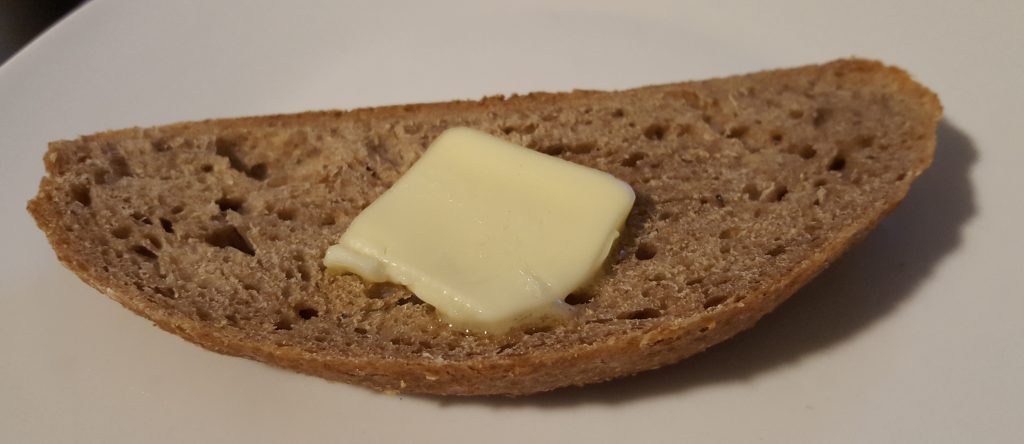
Resources for Sourdough:
Cooked documentary on Netflix
First We Eat podcast “Sourdough”
Fresh Flavors: Homemade sourdough bread is easy to make (just takes time) and allows easier digestion for the body.

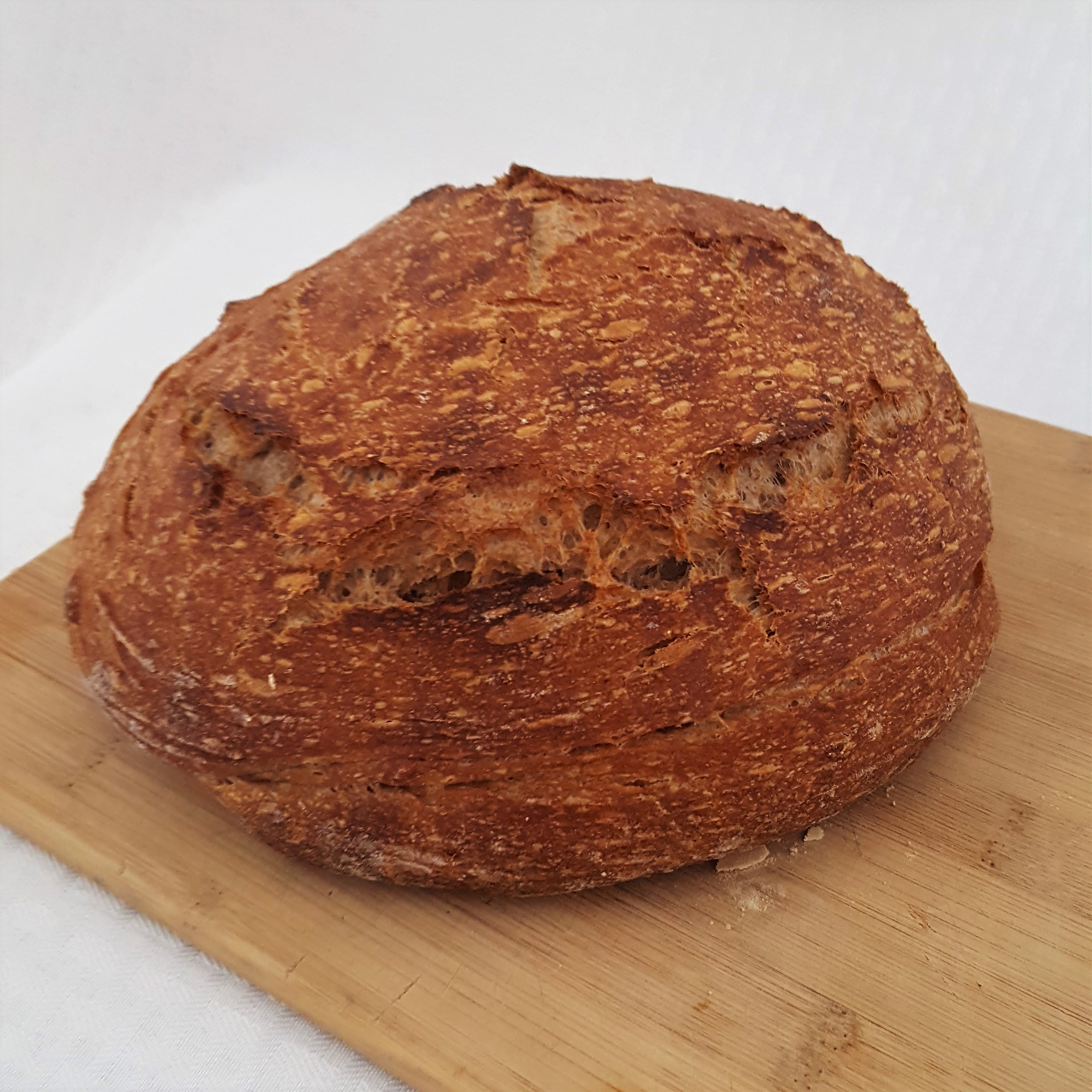
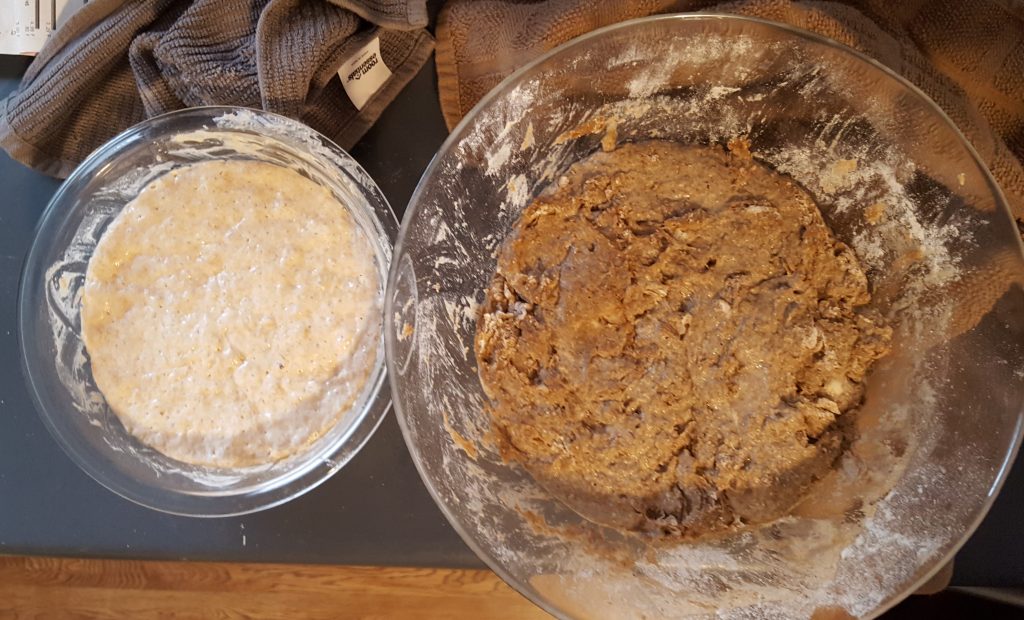

Pingback:Sourdough Bread Dough Too Wet | Best Recipes Idea Online
thematart.com
July 12, 2017No Knead Revisited – Many years have passed since the original New York Times no knead bread recipe was published and when Breadtopia was born, by the way.
Mindy Voet
July 12, 2017Can you leave a link for this?
33Claudia
May 18, 2017I must say it was hard to find your site in search results.
You write awesome articles but you should rank your blog higher
in search engines. If you don’t know how to do it search on youtube:
how to rank a website Marcel’s way
Mindy Voet
May 18, 2017Thanks a lot I will check it out!
M. C. Frye
May 17, 2017I love baking sourdough breads! I use a Romertopf clay baker or a La Cloche baker unless it’s baguette day. My sourdough starter is almost 2 years old now.
Mindy Voet
May 17, 2017That’s great I love to hear that others are making sourdough breads!
Pingback:The Truth About Carbs: What is good and bad and why simple carbs need to be avoided